
Arabidopsis bioinformatics resources: Current state, challenges, and priorities for the future (Plant Direct)
Plant Science Research WeeklyFuture research success demands that data are reliable, accessible and shareable. This means that as types and magnitudes of data change, best practices for how data are collected and stored must be regularly updated. Following a focused workshop, the International Arabidopsis Informatics Consortium…
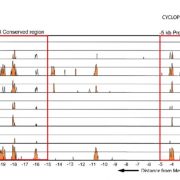
The secret of NIN (Nodule Inception) ($) (Plant Cell)
Plant Science Research WeeklyTwenty years ago, a genetic screen of Lotus japonicas identified NIN (NODULE INCEPTION), a transcription factor required for both early (infection thread) and late (nodule primordium development) stages of nodule formation. In daphne (a weak allele of NIN), infection threads form but not nodule primordia,…

Local auxin biosynthesis is a key regulator of plant development ($) (Devel Cell)
Plant Science Research WeeklyMorphogenic gradients of auxin are essential for plant phenotypic plasticity. Polar auxin transport plays a central role in auxin maxima generation. The exquisite spatiotemporal expression patterns of auxin biosynthesis genes suggested that local sources of auxin may contribute to the formation of auxin…
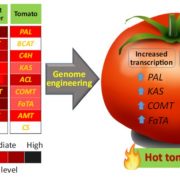
Opinion: Capsaicinoids: Pungency beyond Capsicum (Trends Plant Sci)
Plant Science Research WeeklyYou probably saw this article being discussed in your favorite news channel (in the UK, coverage spanned from the Daily Mail to the Guardian). In an Opinion article, Naves et al. discuss the genetics, biochemistry, ecology and health-benefits of capsaicinoids (the “heat” in chili pepper), and consider…
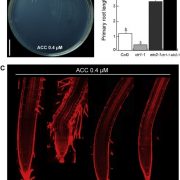
CONSTITUTIVE TRIPLE RESPONSE 1 and PIN2 coordinately regulate indeterminate root growth (Plant Sci)
Plant Science Research WeeklyMéndez-Bravo et al. explored the mechanism for the dramatic phenotype of the ctr1 mutant (CONSTITUTIVE TRIPLE RESPONSE 1), which inhibits both cell division and elongation. In the ctr1-1 mutant background, auxin response is induced at the root tip and an increase in expression of the auxin transporter…
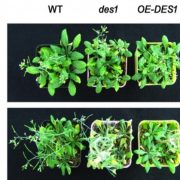
Hydrogen sulfide regulates energy production to delay leaf senescence induced by drought stress in Arabidopsis (Front Plant Sci)
Plant Science Research WeeklyPremature leaf senescence can occur due to a mutation of a L-cysteine desulfhydrase1 (DES1) gene that encodes an enzyme that produces hydrogen sulfide (H2S), a "gasotransmitter" with functions in plants as well as mammals. Jin et al. explored the physiological functions of H2S in Arabidopsis. In addition…

PID/WAG-mediated phosphorylation of PIN3 mediates polarity switches during gravitropism (Sci Reports)
Plant Science Research WeeklyAuxin distribution depends on the polar localization of PIN-FORMED or PIN proteins. Based on different development and environmental stimuli, PIN proteins switch polarity to redirect the auxin flux. Additionally, phosphorylation of PIN is required for its function. For instance, PIN3 phosphorylation…
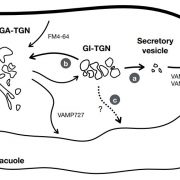
A Golgi-released subpopulation of the trans-Golgi network mediates protein secretion in Arabidopsis ($)
Plant Science Research WeeklyThe plant trans-Golgi network (TGN) plays the role of early endosomes and acts as hub for the both secretory and vacuolar trafficking pathways. Two types of TGN, GA-TGN (Golgi-associated TGN) and GI-TGN (Golgi-released independent TGN), have been observed in plants. Here, Uemura et al. explore the cellular…
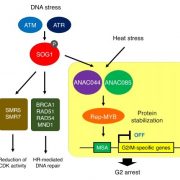
A regulatory module controlling stress-induced cell cycle arrest in Arabidopsis (bioRxiv)
Plant Science Research WeeklyProgression of the cell cycle central to growth, but during stress conditions plants arrest cell cycle progression to enable the organism to survive. SUPPRESSOR OF GAMMA RESPONSE 1 (SOG1), a plant-specific NAC-type transcription factor, regulates the expression of almost all genes induced by double-strand…

